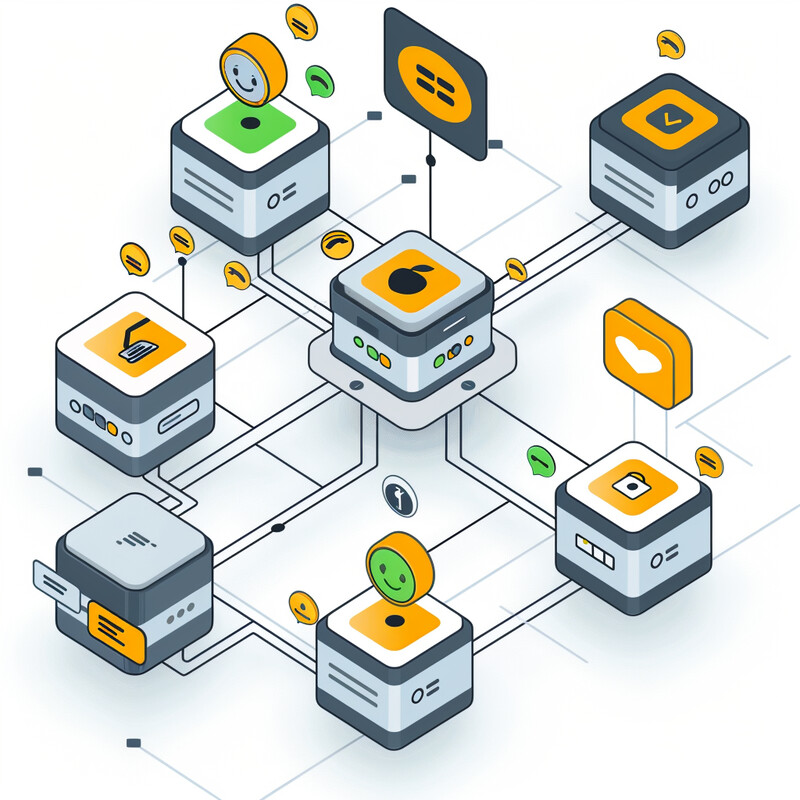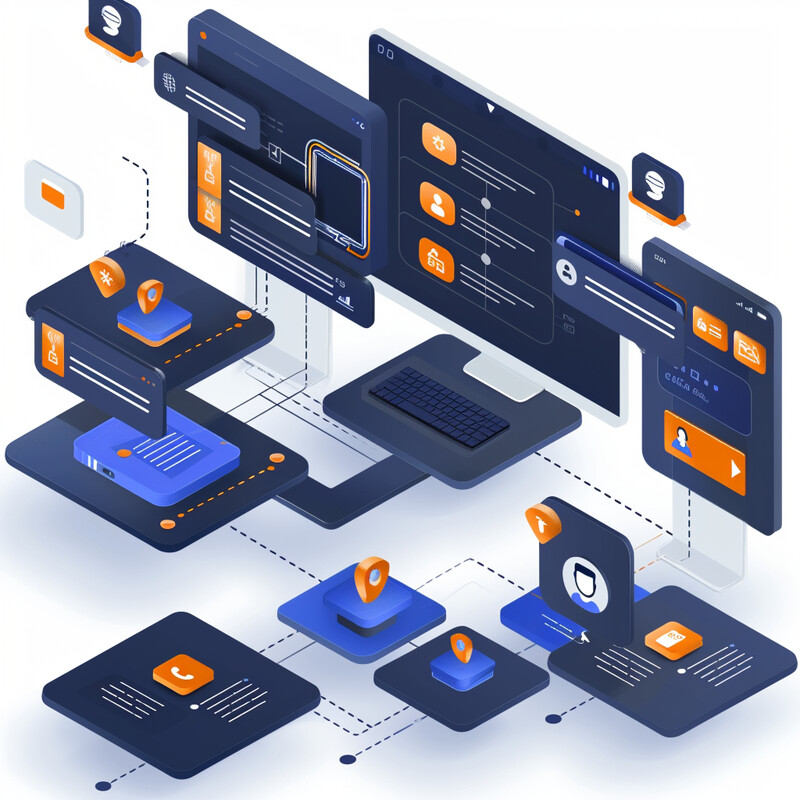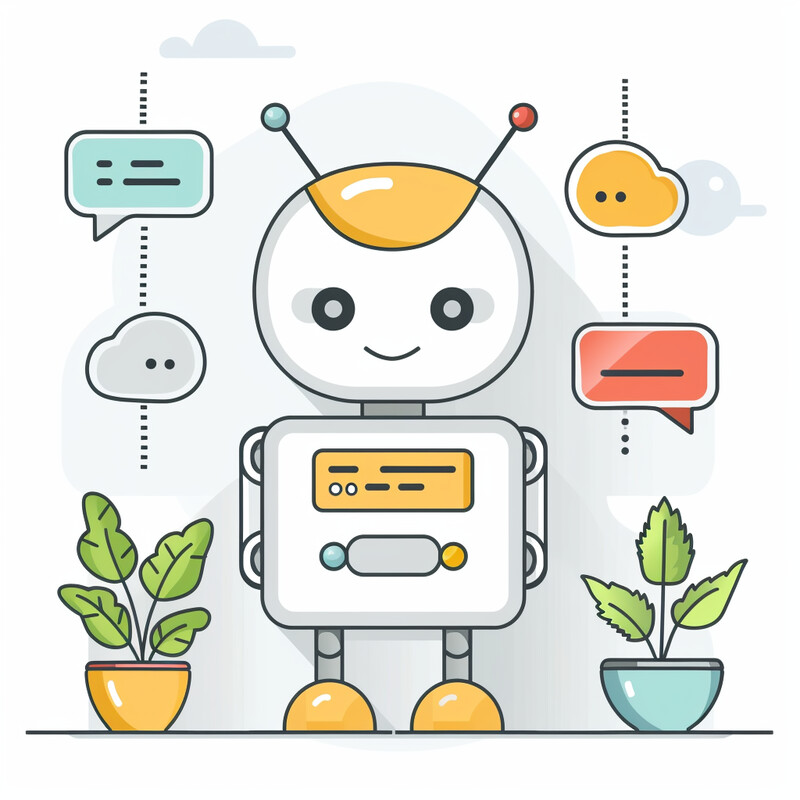1. Natural Language Understanding (NLU)
AI’s role in NLU is to help chatbots interpret and process human language in a way that feels natural. By leveraging advanced natural language processing and large language models, AI chatbots can grasp user intent even when queries are phrased colloquially or include slang. This means the bot understands context, nuances, and ambiguous phrasing that rule-based systems would miss. Effective NLU allows the chatbot to maintain more human-like conversations, asking clarifying questions or remembering context from earlier in the chat. Overall, AI-driven NLU makes interactions more intuitive and accurate, reducing misunderstandings and improving user satisfaction with the conversation.
-1.jpg)
Nearly half of customers (48%) say it has become difficult to tell if they are chatting with a human or an AI, indicating how naturally AI chatbots can now understand and respond to language.
2. Personalization
AI enables a high degree of personalization in chatbot interactions by using data about the customer to tailor responses. This means the chatbot can recall a user’s past purchases, preferences, or browsing history to make relevant recommendations. Over time, AI learns what a specific user might need—greeting them by name, offering product suggestions that align with their interests, or adjusting its tone to match the customer’s style. Such personalized touches make customers feel understood on an individual level. By delivering more relevant help and product advice, AI-driven personalization can improve the customer experience, strengthen loyalty, and even drive higher conversion rates as customers receive offers that genuinely fit their needs.

In a recent survey, 52% of consumers reported higher satisfaction when their experiences with a brand were more personalized, underscoring that AI-driven personalization in chatbots can directly boost customer happiness.
3. 24/7 Availability
AI chatbots allow businesses to offer customer service around the clock. Unlike human support agents, who are limited by work shifts and time zones, an AI chatbot is always on and ready to help. This 24/7 availability means customers can get answers to questions or resolve issues at any time—late at night, on weekends, or during holidays—when human staff might not be available. For a global customer base, an always-available bot ensures no one has to wait until the next day for help, reducing frustration. In essence, AI provides continuous service coverage, which improves customer confidence that support is there whenever they need it and helps companies meet expectations for instant, always-on assistance.

In 2024, 82% of consumers said they would opt to use a chatbot instead of waiting for a live representative to answer their call, highlighting how important around-the-clock, immediate support has become.
4. Instant Response
AI chatbots excel at providing instant responses to customer inquiries. As soon as a question is asked, the system can retrieve information and formulate an answer within seconds, far faster than the typical wait time for a human agent. This speed is crucial in an era when customers expect immediate gratification—quick answers can mean the difference between a satisfied customer and one who grows impatient. Instant responses help customers troubleshoot issues on the spot or make decisions faster (for example, getting a quick product detail while shopping online). By dramatically reducing or eliminating wait times, AI-driven instant response improves user experience and demonstrates efficiency, which can elevate a company’s service reputation.

Approximately 72% of customers now say they want service to be immediate, reflecting why AI chatbots’ ability to respond in real time is so valuable in customer support.
5. Multilingual Support
AI empowers chatbots to communicate in multiple languages, breaking language barriers in customer service. Through multilingual natural language processing or real-time translation, a single AI chatbot can seamlessly switch between languages based on the user’s needs. This means businesses can serve customers in their native language without hiring separate support teams for each language. Customers benefit by receiving help in a language they are most comfortable with, which reduces confusion and builds trust. By offering consistent support across languages (whether it’s English, Spanish, Chinese, or others), AI chatbots make customer service more inclusive and allow companies to reach a broader, global audience effectively.

A global survey found that 68% of consumers would switch to a different brand if it offered support in their native language and their current brand did not, showing how crucial multilingual customer service is for retaining customers.
6. Handling High Volumes
AI chatbots are designed to handle a high volume of customer interactions simultaneously, something human teams struggle with. In practice, this means an AI chatbot can field thousands of chats at once without getting overwhelmed—answering repetitive FAQs, guiding users through standard procedures, and triaging issues continuously. During peak times or sudden spikes in inquiries (such as sales events or service outages), the bot can maintain speedy responses for everyone, whereas a human team would typically form a backlog. By offloading routine queries to AI, human agents are freed up to focus on more complex cases. The net effect is improved efficiency: customers experience little to no wait, and the business can scale support to large audiences without a proportional increase in staff costs.

According to IBM, AI chatbots can successfully handle up to 80% of routine customer service questions and tasks, allowing human agents to focus only on the more complex 20% of issues.
7. Integration with Other Systems
AI chatbots can integrate with a company’s other software systems (like databases, CRM, order management, or scheduling tools) to provide more comprehensive service. This integration means the chatbot isn’t working in isolation—it can pull up account information, order statuses, or personal data to answer questions specific to the customer. It can also execute transactions: for example, booking an appointment through a calendar system, processing a refund via an e-commerce platform, or updating a shipping address in a database, all during the chat. By connecting to these systems, the AI chatbot can resolve inquiries end-to-end without handing off to a human agent. This not only saves time but also creates a smoother experience where the customer can accomplish tasks in one conversation, from checking account balances to making purchases, guided by the chatbot with live data.

Businesses report that 26% of all sales at companies using chatbots now begin through a chatbot interaction, a sign that chatbots integrated with CRM and sales systems are driving a significant portion of transactions.
8. Continuous Learning
AI chatbots have the capability to continuously learn and improve from each interaction. Through machine learning algorithms, the chatbot analyzes past conversations to refine its understanding of language and to correct mistakes. For instance, if the AI provided an unhelpful answer and the user rephrased the question or indicated dissatisfaction, the system can learn to better interpret that query in the future. Over time, the chatbot expands its knowledge base (often by ingesting new data or being retrained on emerging customer queries) which boosts its accuracy and response quality. This adaptive learning means that an AI chatbot today will likely perform better after several months of real-world use. The result is a service that keeps getting more efficient and more adept at solving customer issues, aligning with evolving customer needs or new product/service information without requiring a complete manual reprogramming.

In one case study, a major bank found that just seven weeks after deploying a new AI chatbot, it was 20% more effective at correctly answering customer questions than the previous system, thanks to the AI’s rapid learning and improvement cycle.
9. Proactive Engagement
AI chatbots can engage customers proactively, rather than waiting for the customer to initiate contact. This means the chatbot can start conversations based on certain triggers or customer behaviors. For example, if a user has been stuck on a checkout page for a few minutes, a chatbot might pop up to ask if help is needed. AI can also analyze usage patterns or purchase history to send helpful suggestions or reminders (“I see your subscription is about to renew; do you have any questions?”). Proactive engagement can guide customers through processes, prevent issues (by offering assistance before the user becomes frustrated), and even upsell or cross-sell in a helpful way. By reaching out first at appropriate moments, AI chatbots keep customers more engaged, enhance their experience with timely support, and potentially drive additional revenue through well-placed recommendations.

Over half (55%) of companies that use chatbots have reported gaining more high-quality sales leads as a result, suggesting that proactive outreach and engagement by chatbots is effectively capturing interested customers.
10. Sentiment Analysis
AI chatbots equipped with sentiment analysis can gauge the emotional tone of customer messages and adjust their responses accordingly. By analyzing word choice, phrasing, or even vocal tone in voice chats, the AI detects whether a customer is happy, frustrated, angry, or confused. This ability allows the chatbot to respond with empathy and appropriate urgency—for example, offering a gentle apology and escalating the conversation to a human agent if a customer’s messages indicate anger or distress. Sentiment analysis helps ensure no customer’s emotional cues are overlooked in a chat. It also provides valuable feedback to the business: aggregate sentiment data can highlight overall customer mood or identify pain points in the customer journey. In real time, sentiment-aware chatbots make interactions feel more human by “reading the room” and can improve outcomes by handling sensitive situations with care or flagging them for human follow-up.

The market for emotion analytics technology (which includes sentiment analysis tools for customer interactions) is growing rapidly – it was valued at about $2.6 billion in 2021 and is projected to reach $10.5 billion by 2031, reflecting how more companies are investing in AI that understands customer sentiment.